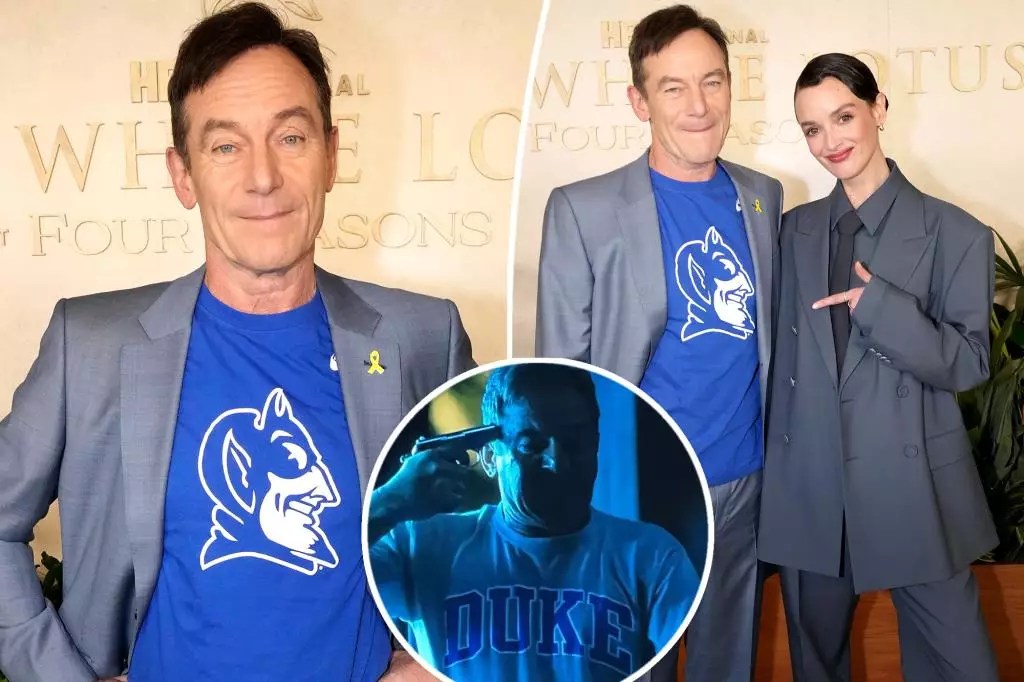Jason Isaacs made waves at the finale event for the acclaimed HBO series “The White Lotus,” showcasing his remarkable ability to blend art with personal expression. Attending with a entourage of fellow cast members, the actor boldly showcased his allegiance to the character Timothy Ratliff by donning a gray suit paired with a vibrant blue Duke University T-shirt. This choice, far from mere costume, was a deliberate statement that ignited a firestorm of conversation about the intersection of creative storytelling and institutional ownership.
Controversy with the Blue Brand
Duke University’s backlash against the depiction of its iconic logo within the HBO series provides an interesting lens through which to examine the evolving relationship between media and trademark rights. The university criticized the show for using its branding in what it termed “troubling” ways, especially against the backdrop of a scene where Ratliff contemplates a dark fate while clad in the Duke colors. This juxtaposition raises salient questions about the power of visual storytelling and the responsibilities of creators when handling recognizable brand identities. Creative liberties are integral to the artistic process; however, this instance serves as a quintessential case study illustrating the tension between institutional representation and personal artistic freedom.
The Viral Effect
The dynamics surrounding Isaacs’ wardrobe choice on the red carpet extend beyond traditional celebrity fashion into the realm of viral culture. The response from social media propelled the controversy to new heights, manifesting as a meme during the NCAA March Madness, attaching a layer of humor to a serious narrative theme. This viral interplay showcases how pop culture can distort and reframe messages, often leading to misunderstandings of artistic intent. The symbol of Duke, which many know primarily as a prestigious university, intertwined with dark themes, invites viewers to confront unsettling questions about identity, allegiance, and the very essence of branding in contemporary media.
Fostering Artistic Expression
In the face of the university’s concerns, Isaacs embodies the spirit of artistic expression, reflecting a growing trend in entertainment where individual voices challenge conventional narratives. Frank Tramble, Duke’s vice president for communications, did acknowledge the importance of creative storytelling, yet the line drawn concerning their trademarks reverberates with echoing implications—fostering a culture where artistic expression must coexist with corporate brand protection. The question remains: Can authentic storytelling flourish in an environment where brands exert control over narrative elements that resonate with wider audiences?
Embracing the Character
As the end of “The White Lotus” season approached, Isaacs and his co-stars displayed a camaraderie that seemed to transcend the screen. Each actor embraced their characters at the finale event, where their attire mirrored the vibrant themes echoed in the series. The sartorial choices made by Isaacs and his peers signify a celebration of character depth and individuality—in stark contrast to the cookie-cutter approach often found in mainstream storytelling. This divergence from the norm reflects a broader cultural shift toward recognizing the significance of personal and artistic identity in a rapidly changing entertainment landscape. This notion invites an exploration of how entertainment absorbs and amplifies contentious issues while simultaneously encouraging dialogue among fans and critics alike.


Leave a Reply